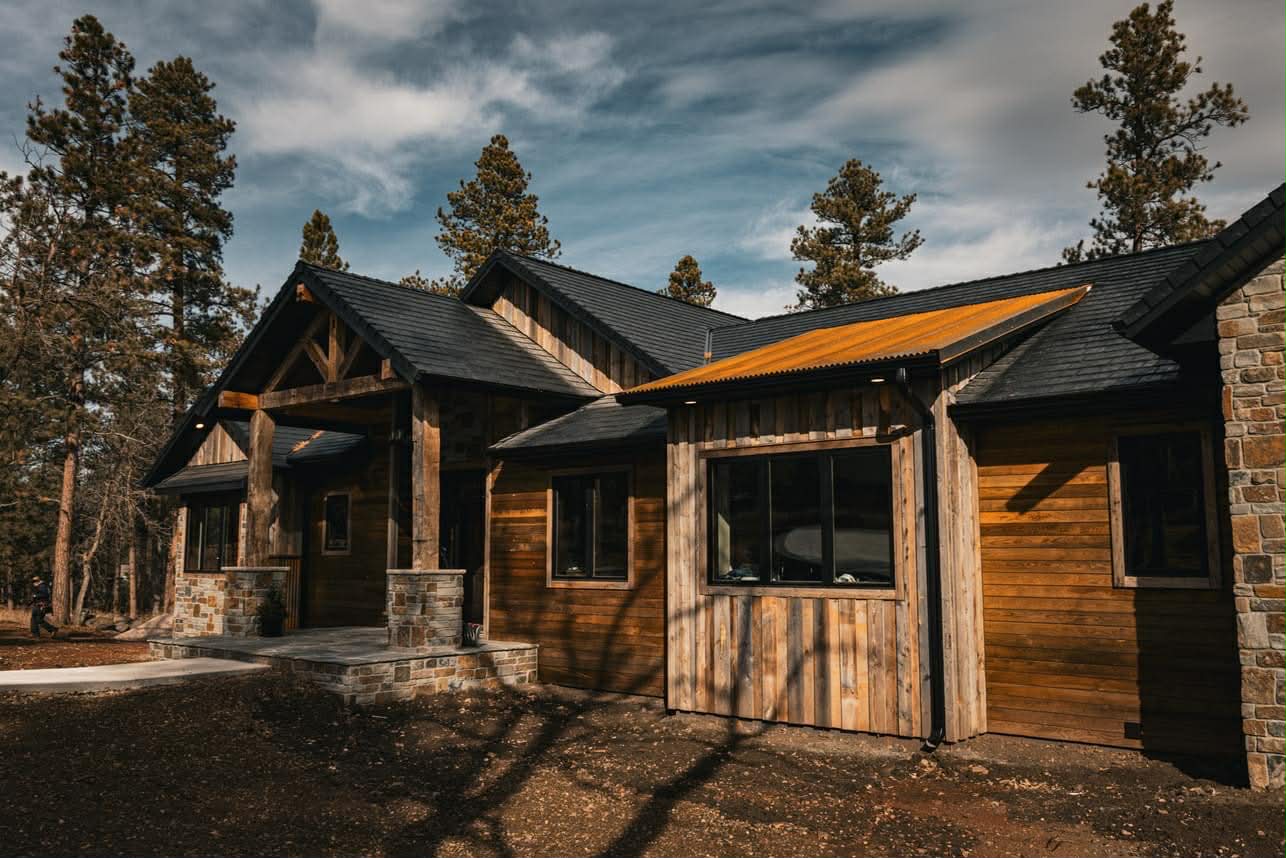The Comprehensive History of Roofing Materials, Methods, and Historic Roof Types
By Contractors Booklist Editorial Team • Oct 30, 2025 • 5 min
You've probably never given much thought to the roof over your head beyond noticing if there's a leak or other issue that needs addressing. But roofs have a long and interesting history spanning centuries of human civilization. The materials and methods used to construct roofs have evolved tremendously over time in response to available resources, building styles, and environmental factors. From the earliest grass-thatched roofs to today's high-tech solar options, roofs provide shelter and have shaped how we build homes and other structures. So next time rain is pattering on the roof above you, take a moment to appreciate how far roofing has come to get to that point. This article will explore the progression of roofing materials and methods through history to give you a new appreciation for that essential element of architecture we often take for granted.
Dive into the cultural tapestry of roofing history, where materials and techniques have been woven together for centuries, shaping how we construct and appreciate the roofs over our heads.
Roofing in Ancient History: Thatch, Tile, and Beyond
Roofing has come a long way since the days of leaves and branches. As civilization developed, we experimented with various materials to shelter ourselves from the elements.
The ancient Egyptians were pioneers, using mudbricks to construct their roofs. The Greeks and Romans improved on this by utilizing clay tiles, creating roofs that lasted for generations. These terra cotta tiles were a big step up from natural materials and were much more durable.
During the Middle Ages, wood shingles became popular in Europe. Wood was abundant, and shingles were easy to make, providing decent protection. Wood shingle roofs lasted a long time and even allowed for decorative patterns, but they were still at risk of rot, mold, and fire.
These days we have many roofing options - asphalt or fiberglass shingles, metal sheets, clay tiles, slate, and synthetic slates. And who knows what roofing innovations the future may hold? One thing's for sure - we've come a long way from the days of foraging for branches and leaves to shelter ourselves from the rain. Our roofs today are durable, long-lasting, and able to withstand the elements. They've allowed us to put down roots in one place, protecting generation after generation.
Roofing Methods and Techniques: How Roofs Were Constructed Traditionally
Roofing methods and techniques have evolved over centuries of trial and error. Traditionally, roofing was labor-intensive and required manual labor and natural, locally-sourced materials.
Thatch Roofing
For centuries, many homes had roofs constructed of dried vegetation like straw, reeds, and sedges. Thatch roofs were popular in rural areas and required a steep pitch to allow rain and snow to slide off. Thatchers would gather vegetation and tie bundles together onto wooden poles to create a water-resistant roof. Thatch roofs could last 10-50 years but were prone to leaks, rot, and fire hazards.
Wood Shingles
Wood shingles, also called shakes, were popular for roofing in forested areas. Shingles were hand-split from logs, typically cedar, redwood, or cypress. Wood shingles were laid in an overlapping pattern to channel water down and off the roof. Wood shingles have a lifespan of 20-50 years, depending on the wood type and climate.
Slate and Clay Tiles
Slate and clay tiles offered a more permanent roofing solution. Slate tiles were hand-cut from slate stone into uniform squares and overlapped for waterproofing. Clay tiles were molded, baked, and laid similarly. Slate and clay roofs could last 50-200 years. They produced a distinctive architectural style and were resistant to rot, fire, and weather.
Roofing methods progressed gradually through improvements in tools, transportation, and materials. Over time, roofing transitioned to industrial manufacturing and application processes. But many traditional roofing styles are still used today for their beauty, durability, and timeless quality.
The Industrial Revolution and Modern Roofing Materials
The Industrial Revolution brought about massive changes in roofing technology and materials. As manufacturing capabilities expanded, better roofing options were developed that were more cost-effective, long-lasting, and fire-resistant compared to traditional materials like wood shingles or thatch.
Slate tiles
Slate stone became a popular roofing material in the 18th and 19th centuries. Slate tiles are fireproof and can last up to 200 years. However, slate was expensive and time-consuming to quarry and install. As cities grew more populated, cheaper and more efficient roofing was needed.
Asphalt shingles
In the early 1900s, asphalt shingles were introduced to the United States. Initially, they were made using organic materials like cotton rags, jute, wool, or wood pulp with asphalt applied to a felt backing and cut into strips for roofing. Asphalt shingles were inexpensive, easy to install, and provided reliable protection, dominating residential roofing for most of the 20th century.
By the 1920s, fiberglass emerged as a new reinforcement for asphalt shingles, offering strength, durability, and moisture resistance. Fiberglass shingles surpassed organic shingles in popularity and remain the most widely used roofing material in the United States.
Metal roofing
Metal roofing, like copper and tin, became more widely used in the 19th century. Zinc and galvanized steel were later introduced, providing an affordable, durable roofing option. Metal roofs last 50-100 years and resist rot, fire, and pests.
Composite roofing
In recent decades, composite roofing materials have been developed to combine benefits of natural and synthetic materials. Composite shingles may contain asphalt or rubber with fiberglass or cellulose reinforcement, offering improved durability, weather resistance, and style options at accessible price points.
Roofing has come a long way from its origins of leaves and branches. Today, a range of roofing materials suits any need—from budget-friendly asphalt shingles to prestigious slate. The industrial age ushered in innovations that shaped the materials we rely on in the modern world.
Roofing in Contemporary Architecture: Honoring History and Tradition
Roofing materials and methods have come a long way since the earliest roofs of leaves and straw. As civilizations developed, roofing evolved to use more durable and long-lasting materials. Today, architects have a variety of roofing options to choose from that honor this history while meeting modern needs.
So next time you're sitting in your living room and hear the pitter-patter of rain on your roof, take a second to appreciate how far roofing has come. What started as simple thatch and wooden shingles has transformed into an advanced industry with durable and sustainable options. Roofing has allowed humans to flourish by protecting us from the elements. Though often overlooked, its progression has been crucial to civilization.

